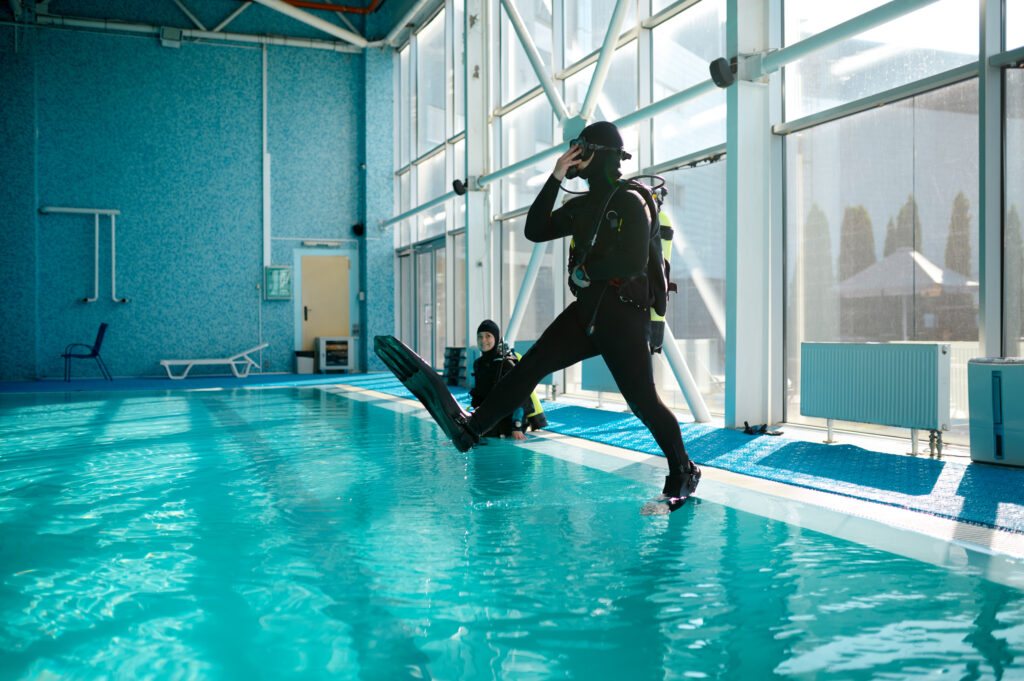What is Cavern Diving?

Cavern diving is a distinct form of scuba diving that involves exploring natural underwater caverns, allowing divers to experience the beauty and mystery of submerged cave systems. Unlike cave diving, where divers venture deep into the labyrinthine recesses of underwater cave networks, cavern diving stays within the sunlit zone, offering a safer and more controlled environment. Cavern divers do not stray far from the surface, ensuring they remain within a short distance of an emergency exit point. This sport attracts those fascinated by unique underwater formations, offering an adventurous alternative to traditional open-water diving.
What is a cavern in the context of diving?

A cavern, in the context of diving, refers to a semi-enclosed underwater area where natural light is still visible and the entrance remains within view. These formations often occur in rock, creating unique and accessible underwater environments for divers. Cavern diving involves the exploration of these partially enclosed spaces, distinct from full cave diving, where the entrance may no longer be visible and natural light does not penetrate. Cavern divers can enjoy the sensation of venturing into more confined underwater environments while still maintaining the safety net of knowing they can see their way out and rely on natural lighting to guide their orientation. This article will explore the history of cavern diving, its unique geological features, required training and equipment, and the essential guidelines for ensuring safety and responsible diving practices.
What is Acetal Resin?

Acetal resin, a high-performance polymer, has risen to prominence in the realm of scuba diving, revolutionizing various aspects of the sport. This powerful material, also known as polyoxymethylene (POM), is known for its extraordinary strength, resilience, and excellent dimensional stability, properties which have made it an ideal candidate to replace certain lightweight metals in many diving applications.
What is a Lanyard?

A lanyard in the context of scuba diving is a crucial accessory designed to secure various pieces of diving equipment to a diver’s body or buoyancy compensator device (BCD). These cords, straps, or retractable reels ensure that essential tools such as cameras, flashlights, and dive computers remain attached to the diver, preventing accidental loss in the underwater environment. The importance of a lanyard cannot be overstated, as it contributes significantly to the safety and efficiency of diving operations, providing peace of mind and allowing divers to focus on their underwater activities.
What is a Scuba Diving Reel?

A scuba diving reel is an essential piece of equipment for divers, providing a reliable way to deploy and manage a line underwater. Reels are used to help divers maintain orientation, navigate, and communicate in a variety of underwater environments, from open water to complex cave systems. The versatility and functionality of reels make them a critical component of safe and effective diving practices.
What is a Delayed Surface Marker Buoy?

A delayed surface marker buoy (DSMB) is an essential piece of equipment used by scuba divers to enhance safety and communication during their underwater activities. Unlike a standard surface marker buoy (SMB), which is deployed at the beginning of a dive, a DSMB is typically deployed from underwater, often towards the end of the dive. This allows divers to mark their position and signal their ascent to the surface, providing visibility to boats and other watercraft in the vicinity. The DSMB plays a critical role in preventing accidents, ensuring divers are easily located, and facilitating safe and efficient dive operations.
What is Traverse in Scuba Diving?

What is Traverse in Scuba Diving? A ‘traverse’ in the context of scuba diving refers to the act of passing through an underwater cave, tunnel, or a passageway by entering at one point and exiting at another. This maneuver is both exhilarating and challenging, requiring a mastery of various diving skills, an understanding of the […]
What is a Swim Thru?

What is a Swim Thru? A swim thru is a noteworthy term in the realm of scuba diving, referring to a short underwater tunnel or opening that divers navigate through during their subaqueous explorations. It can be a natural feature like an opening in a coral reef or a rock formation, or an artificial feature […]
What is a Surface Marker Buoy?

What is a Surface Marker Buoy? A Surface Marker Buoy (SMB), also known as a safety sausage or dive sausage, is a critical safety device used by scuba divers to indicate their location to people at the surface. Their usage is widespread in recreational and professional diving, as they provide an essential visual reference for […]
What is Scuba Orienteering?

What is Scuba Orienteering? Scuba orienteering, a competitive underwater sport, marries the thrill of scuba diving with the intellectual rigor of navigational challenges. Participants in this sport traverse an underwater circuit delineated by buoys without surfacing, utilizing tools such as a compass and mechanical distance measurement devices to guide their path. Competitors are scored based […]
